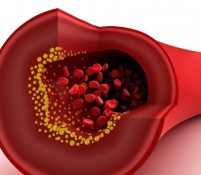WARSS = Warfarin-Aspirin Recurrent Stroke Study he major complication of anticoagulant therapy is bleeding. In this review, the incidence of hemorrhage in patients receiving oral anticoagulants or heparin and the clinical and laboratory risk factors that predispose to bleeding are discussed. The focus is on major bleeding and fatal bleeding. Details of the method used to select relevant articles can be found in the six previous sympo-sia1-6 of the American College of DisIll Physicians and the chapter in this Supplement by Schiinemann et al. 
Bleeding was generally classified as major if it was intracranial or retroperitoneal, if it led directly to death, or if it resulted in hospitalization or transfusion.1’2 However, there was variation between studies for the definition of bleeding. Although bleeding is the major side effect of anticoagulant therapy Viagra in Sydney, it should not be considered in isolation of potential benefit, ie, reduction in thromboembolism. This chapter focuses on bleeding related to vitamin K antagonists and heparins. In the section on vitamin K antagonists, risk factors for bleeding are first considered, and then bleeding rates for specific clinical conditions are presented. The same format is used for heparins. Bleeding related to new antithrombotic agents is also briefly discussed in a chapter by Weitz et al in this Supplement. The search and eligibility criteria used for our review are described in
Table 1.
1.0 Vitamin K Antagonists
1.1 Determinants of bleeding
The major determinants of oral vitamin K antagonist-induced bleeding are the intensity of the anticoagulant effect, patient characteristics, the concomitant use of drugs that interfere with hemostasis, and the length of therapy.
1.1.1 Intensity of anticoagulant effect
There is a strong relationship between the intensity of anticoagulant therapy and the risk of bleeding that has been reported in patients with deep vein thrombosis (DVT), tissue heart valves, mechanical heart valves, ischemic stroke, and atrial fibrillation. In randomized clinical trials (RCTs) for these indications, the frequency of major bleeding in patients randomly assigned to warfarin therapy at a targeted international normalized ratio (INR) of approximately 2.0 to 3.0 has been less than half the frequency in patients randomly assigned to warfarin therapy at a targeted INR > 3.0.
The intensity of anticoagulant effect is probably the most important risk factor for intracranial hemorrhage, independent of the indication for therapy, with the risk increasing dramati- In five randomized trials in patients with atrial fibrillation, the annual incidence of major bleeding averaged 1.3% in patients randomly assigned to warfarin therapy (targeted INR generally 2.0 to 3.0), compared with 1.0% in patients randomly assigned to treatment with placebo. In patients with atrial fibrillation, an INR of 2.5 (range, 2.0 to 3.0) minimizes the risk of either hemorrhage or throm-boembolism. Among patients with antiphospholipid antibody syndrome and prior thrombosis, the annual rate of major bleeding was similar in patients treated with warfarin at a targeted INR of 2.0 to 3.0, compared to those treated with warfarin at a targeted INR of 3.1 to 4.0 (3.0% vs 2.7%, respectively).